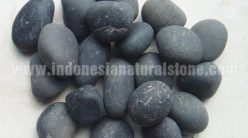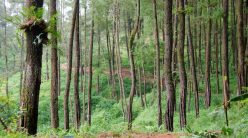.arikah.ne
Description
The birds called Swiftlets or Cave Swiftlets are contained within the four genera Aerodramus, Hydrochous, Schoutedenapus and Collocalia. They form the Collocaliini tribe within the swift family Apodidae. The group contains around thirty species mostly confined to southern Asia, south Pacific islands, and northeastern Australia, all within the tropical and subtropical regions. They are in many respects typical members of the Apodidae, having narrow wings for fast flight, with a wide gape and small reduced beak surrounded by bristles for catching insects in flight. What distinguishes many but not all species from other swifts and indeed almost all other birds (but the Oilbird) is their ability to use a simple but effective form of echolocation to navigate in total darkness through the chasms and shafts of the caves where they roost at night and breed. Their nests are often collected for the Chinese delicacy Bird’s nest soup.
Genus Aerodramus
See Imag [1][2]
See Maps of Geographic Rang [3][4][5][6][7]
Introduction
The Genus Aerodramus in family Apodidae is of special interest due to its use of echolocation and their intricately constructed nests which are harvested and bought at extremely high prices. These birds are closely related to the oilbirds which also nest in caves and use echolocation. Also the hummingbird and the nightjars are close relatives (Lee). The swifts remain one of the more complicated groups of birds to taxonomically separate. Plumage is usually dull, with shades of black, brown, and gray and the physical structures are very similar. Swiftlets have four toes, except the Papuan swiftlet which lacks the back toe, the hallux (Lee). Legs are very short, preventing the bird from perchering, but allowing the bird to cling to vertical surfaces. The birds are able to glide due to very long primary wing feathers and small breast muscles. These larger swiftlets weigh about 14 grams (Lee). Male and female swiftlets look similar. These birds are monogamous and both take part in caring for the nestlings. Males perform aerial displays to attract females and mating occurs at the nest. The breeding season overlaps the wet season; which corresponds to an increased insect population. Clutch size depends on the location and the food source, but Aerodramus swiftlets lay around 1-2 eggs. The eggs are a dull white color and are laid in intervals of every other day. These swiftlets are colonial nesters; building nests in high, dark corners on cave walls (Camfield). Swiftlets in temperate zones do migrate but, most Aerodramus swiftlets live in the south Pacific and do not migrate. These birds usually remain in one cave. Some examples of caves include the Niah Caves, Gunung Mulu National Park, and Niah National Park which are all located on the island of Sarawak, off of Malaysia (Hobbs).
The use of echolocation was once used to separate Genus Aerodramus from the non-echolocating Genuses, Collocalia and Hydrochous. But recently, the genus Collocalia was discovered making similar clicking noises in and outside the cave (Thomassen, 2004). Behaviors, such as what materials the nests contain, can be used to depict between certain species of Aerodramus (Lee, 1996). Swiftlets are insectivores; hymenoptera and diptera being the most abundant prey (Lourie, 2000). Typically, swiftlets leave the cave during the day to forage and return to their roost at night (Price, 2014). Swiftlets are found in limestone caves ranging from the Indian Ocean to the South Pacific (Marcone, 2014). Over the past twenty years, the high demand for these unique nests has affected the swiftlet population (Hobbs, 2003).
Echolocation
The genus, Aerodramus, was thought to be the only echolocating swiftlet in the family Apodidae. These birds use echolocation to locate their roost in dark caves. Unlike a bat’s echolocation, Aerodramus swiftlets make clicking noises that are well within the human range of hearing (Price, 2014). The clicks consist of two broad band pulses (3-10 kHz) separated by a slight pause (1-3 msec). The interpulse periods (IPPs) are varied depending on the level of light; in darker situations the bird emits shorter IPPs, as obstacles become harder to see, and longer IPPs are observed when the bird nears the exit of the cave. This behavior is similar to bats as they approach targets. The birds also emit a series of low IPPs followed by a vocalization call when approaching the nests; presumed to warn nearby birds. The frequency of clicks does not aid in echolocation but rather the bird gathers temporal information about its surroundings.
It is thought that double clicks are used to discriminate between individua birds. Aerodramus sawtelli, Atiu Swiftlet, and Aerodramus maximus are the only swiftlets which emit single clicks. The single click is thought be used to avoid voice overlap during echolocation. The use of a single click might be associated with a shift in eastern Pacific swiftlets. If so determining how many clicks Aerodramus ocistus emits, could further this hypothesis. It was also discovered that both the Atiu Swiftlet and the Papuan Swiftlet, emit clicks while foraging outside the cave at dusk; a behavior not common to any swiftlets (Fullard, 1993).
Three hypotheses are used to describe how echolocation evolved in the Genu Aerodramus and, more recently, other clades in the family Apodidae. One hypothesis states that echolocation evolved from an ancestral species of swiftlets and was lost in the geneses which lack echolocation. A second hypothesis is that echolocation evolved independently, only in the geneses which are able to echolocate. The third scenario involves a combination of the first two. The first hypothesis would involve three events, one having echolocation evolve once in two genuses and then being lost twice in other clades. The second hypothesis would need only two events to occur; echolocation evolved independently in only two genuses. This suggests that the second scenario was more likely to occur.
Several subunits are needed to produce the echolocating system. Past studie have thought that the loss of one of these subunits was more likely to occu than acquiring all the traits needed to echolocate. But a recent study suggest that the echolocating subunits were mainly located in the central nervou system, while other subunits were already present and capable of use befor echolocation even evolved. This study used the second hypothesis stating tha echolocation evolved independently in Aerodramus and Collocalia, with the evolution of complex traits needed to complete the echolocation system. This hypothesis might be more likely to occur than the subsequent loss of the subunits in other clades of Apodidae (Thomassen, 2014).
Food
Authentic bird’s nest soup is made using the nests of the swiftlet. Instead o twigs and straw, the swiftlet makes its nest from strands of gummy saliva which harden when exposed to air. Once the nests are harvested, they ar cleaned and sold to restaurants, where they are served simmered in chicke broth
Authentic bird’s nest soup is quite popular throughout Asia, perhaps because i has the reputation of being an aphrodisiac. It is also quite costly; many wester restaurants serve a less expensive version consisting of soup with noodle shaped to resemble a bird’s nest
Cave ecology
Guano (dung) from both the swiftlets and the many bats that inhabit the caves supports a huge array of specialized animals that feed on the dung. There are yet other creatures that have evolved to feed on these dung eaters as well as on the bats and the swiftlets themselves, including snakes that can climb the sheer walls to snatch a passing meal and huge carnivorous crickets that prey on chicks and bat pups.
This ecosystem is self-sustaining, the only link with the outside being the birds and the bats that bring the nutrients into the caves in the first place.
The Philippine municipality of El Nido in Palawan, known for its limestone cliffs and pristine beaches is home to a thriving Bird’s Nest market. The name El Nido is the Spanish term for literally “The Nest”. Many locals still practice manual climbing of the limestone caves to gather Swiftlet nests.
References
Camfield, Alaine. “Family Apodidae”. Animal Diversity Web. University o Michigan Museum of Zoology http://animaldiversity.ummz.umich.edu/site/accounts/information/Apodidae.html>.
Fullard, James H. “Echolocation in Free-Flying Atiu Swiftlets (Aerodramu sawtelli) ”. Biotropica 25 (1993): 334-339
Gausset, Quentin. (2004) “ Chronicle of a Foreseeable Tragedy: Birds’ Nest Management in the Niah Caves (Sarawak)”. Human Ecology 32: 487-506.
Hobbs, Joseph J. (2004) “Problems in the harvest of edible birds’ nests i Sarawak and Sabah, Malaysian Borneo”. Biodiversity and Conservation 13: 2209-2226.
Lee, Patricia L. M., Clayton, Dale H., Griffiths, Richard, Page, Roderic D. M “Does behavior reflect phylogeny in swiftlets (Aves: Apodidae)? A test usin cytochrome b mitochondrial DNA sequences”. Evolution 93 (1996): 7091-7096
Lourie, SA, Tompkins, DM. “The diets of Malaysian swiftlets”. IBIS 142 (2000) 596-602
Marcone, Massimo F. (2014) “Characterization of the edible bird’s nest th Caviar of the East”. Food Research International 38:1125-1134.
Price, Jordan J., Johnson, Kevin, P., Bush, Sarah H., Clayton, Dale H “Phylogenetic relationships of the Papuan Swiftlet Aerodramus papuensis an implications for the evolution of avian echolocation”. IBIS 147 (2014): 790 –
Price, Jordan J., Johnson, Kevin P., Clayton, Dale H. “The evolution o echolocation in swiftlets”. Journal of Avian Biology 35 (2004): 135 –
Thomassen, Henri A., Tex, Robert-Jan, Bakker, Merijn A.G., Povel, G. David E “Phylogenetic relationships amongst swifts and swiftlets: A multi locu approach”. Molecular Phylogenetics and Evolution 37 (2014): 264-277
Species
• Genus Hydrochous
◦ Waterfall Swift, Hydrochous gigas
• Genus Collocalia
◦ Glossy Swiftlet, Collocalia esculenta
◦ Cave Swiftlet, Collocalia linchi
◦ Pygmy Swiftlet, Collocalia troglodytes
• Genus Aerodramus
◦ Seychelles Swiftlet, Aerodramus elaphrus
◦ Mascarene Swiftlet, Aerodramus francicus
◦ Indian Swiftlet, Aerodramus unicolor
◦ Philippine Swiftlet, Aerodramus mearnsi
◦ Moluccan Swiftlet, Aerodramus infuscatus
◦ Mountain Swiftlet, Aerodramus hirundinaceus
◦ White-rumped Swiftlet, Aerodramus spodiopygius
◦ Australian Swiftlet, Aerodramus terraereginae
◦ Himalayan Swiftlet, Aerodramus brevirostris
◦ Indochinese Swiftlet, Aerodramus rogersi
◦ Volcano Swiftlet, Aerodramus vulcanorum
◦ Whitehead’s Swiftlet, Aerodramus whiteheadi
◦ Bare-legged Swiftlet, Aerodramus nuditarsus
◦ Mayr’s Swiftlet, Aerodramus orientalis
◦ Palawan Swiftlet, Aerodramus palawanensis
◦ Mossy-nest Swiftlet, Aerodramus salangana
◦ Uniform Swiftlet, Aerodramus vanikorensis
◦ Palau Swiftlet, Aerodramus pelewensis
◦ Guam Swiftlet, Aerodramus bartschi
◦ Caroline Islands Swiftlet, Aerodramus inquietus
◦ Atiu Swiftlet, Aerodramus sawtelli
◦ Polynesian Swiftlet, Aerodramus leucophaeus
◦ Marquesan Swiftlet, Aerodramus ocistus
◦ Black-nest Swiftlet, Aerodramus maximus
◦ Edible-nest Swiftlet, Aerodramus fuciphagus
◦ German’s Swiftlet, Aerodramus germani
◦ Papuan Swiftlet, Aerodramus papuensis
• Genus Achoutedenapus
◦ Scarce Swift, Schoutedenapus myoptilus
◦ Schouteden’s Swift, Schoutedenapus schoutedeni
Category
Apodidae





